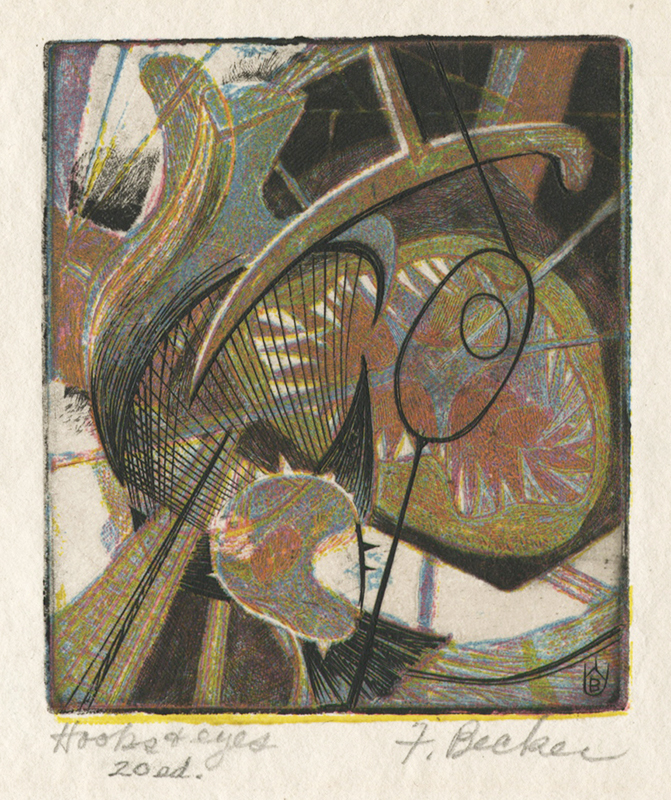
19th, 20th & 21st Century Fine Prints
707-546-7352 · fax 707-546-7924 · web: www.annexgalleries.com · email: artannex@aol.com
Hooks and Eyes by Fred G. Becker

Hooks and Eyes
Fred G. Becker
Hooks and Eyes
Fred G. Becker
1913 - 2004 (biography)An impression of "Hooks and Eyes" was illustrated and described by David Acton on pages 170 and 171 of "A Spectrum of Innovation: Color in American Printmaking" as an example of Becker's experimental innovations.
In addition, in "Fred Becker and Experimental Printmaking," for Print Quarterly, volume 10, No 4, Dec. 1993, print scholar James Wechsler described Becker's techniques used to create "The Cage", "Celestial Grub", "Hooks and Eyes", and "Aerial Jungle". Becker was printing with the experimental collective Atelier 17 in New York in the 1940s.
"Back at the Atelier, Becker was able to explore further the potential of relief printing. He made four finished colour prints between 1946 and 1948: "The Cage" and "Aerial Jungle", both in 1946, "Hooks and Eyes" in 1947 and "Aerial Jungle" in 1948. In order to insure the correct registration of the overlapping plates, Becker devised a technique wherein he first freely engraved the rudimentary abstract shapes on a piece of scratchboard (black paper coated with many layers of white gesso through which lines can be scratched). Then, using the pressure of an etching press, he pressed this low-relief engraving onto each of four plates coated with a soft-ground resist.
After etching the plates with acid, he reworked each one with a variety of tools, using as guidelines the forms that were identically bitten into each one. These plates could then be inked on the surface for relief printing, inked in the recesses for intaglio printing, or inked in a combination of both ways.
Because the translucent inks overlap each other in varying degrees, depending on the amount of plate surface he engraved, Becker was able to achieve dense, richly layered images with an enormous range of hues and secondary colours. Each print from the published edition of 20 will vary from impression to impression.
